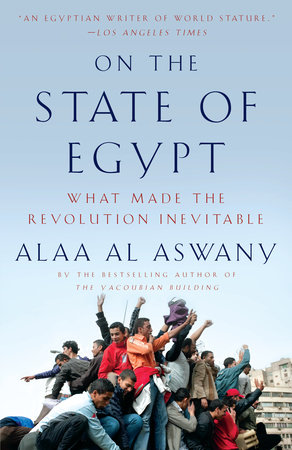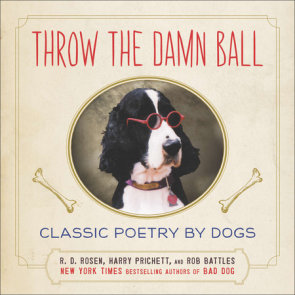Author Q&A
A Conversation with R. D. Rosen, Roger Brooks, and Veryl Goodnight
1. R. D. Rosen: Do you remember your reaction when, having just met you, I asked your permission to write a book about you and Charlie? I sensed right away that your personal story was at the center of a much bigger web of personal and historical issues. I was deeply struck, as a writer, by the fact that you, Veryl, were descended from two people instrumental in saving all American buffalo from extinction–and here you two were, saving a single buffalo. Were you surprised by my interest? You were both always extremely supportive and cooperative, but did you have any moments of doubt or regret that you hid from me?
Roger: Other than wanting the best possible life for Charlie, my goal for him was to be an ambassador for his species. So few people have the opportunity to touch a bison, be licked by one, to smell them (very sweet and clean) and to better understand what this animal is about. I supported your writing a book because it was an extension of Charlie’s ambassador role, to create a better understanding and a greater appreciation of these magnificent animals and their tragic role in America’s history.
Veryl: I wasn’t surprised when you asked to write a story about Charlie. The moment I began researching the role that Charles and Mary Ann Goodnight played in saving bison from hide hunters in the 1870”s, I recognized it as an untold story that needed written.
2.RDR: I certainly knew next to nothing about the buffalo’s embattled history before starting to write A Buffalo in the House–and I was stunned by the scale of the slaughter and the widespread indifference to it. How much were you two aware of that history while raising Charlie?
Roger: I had never given the history of the bison/human encounter much thought. I gained great insight as to how inappropriately this animal was treated by white settlers and often by Indians as well. My education was the nexus for my desire to have Charlie educate others, to be an ambassador for his species.
Veryl: I was aware of the massive slaughter of the bison, but I was not aware of the individuals such as Charles and Mary Ann Goodnight who devoted so much of their lives helping bring the bison back from the brink of extinction. The story of humanity at its best inspired me to sculpt “Back From the Brink.” Why not inspire a writer too?
3.RDR: Has your relationship with your other animals–your horses, dogs, and cat–changed as a result of your experience with Charlie?
Roger: No.
Veryl: I have always had – and always will have – a deep love for all animals.
4.RDR: While writing the book, I was concerned with balancing the telling of the “small” story in the present with the “big” story in the past to which it was connected through your ancestors, Veryl. I wanted readers to see how your and Roger’s love for Charlie occurred in a much larger context. I think we all struggle to see how events in our daily lives are shaped, and given meaning, by the past. I’m wondering what message you hope the book has for readers.
Roger: The book was yours to write, to interpret history and events in the way you felt as being most appropriate. Respect for the animal world is a key message in the book.
Veryl: The story of our raising Charlie was a catalyst to tell a much bigger story. The heart of the book, to me, is how such a magnificent animal was brought so close to extinction and how individuals such as Charles and Mary Ann Goodnight saw beyond the politics of the time and fought to stop the slaughter and save the remnant herds. The grand finale is telling how this history of slaughter is being repeated as the only wild and unmanaged bison herd in America, the Yellowstone herd, attempt their annual migration to lower country to calve.
5.RDR: What kind of feedback from your families, friends, and colleagues have you received since the book’s publication? Veryl, have you gotten any interesting requests for artwork since A Buffalo in the House was first published?
Veryl: I have been very pleased with everyone’s response to A Buffalo in the House. While “anything for art” is what started this chapter in our lives, the book shares our relationship with animals that supercedes their roles as models for sculpture.
6.RDR: You provided an e-mail address for readers to reply with their thoughts on the book. So far, what similarities are you finding in those responses?
Roger: Almost every email response I received from readers had two common elements, they laughed and they cried. They also better understood that bison are not mere lumps on the prairie, they are sensitive and stoic animals that have only suffered from self-serving human attitudes.
Veryl: Roger has responded to every email and read the most poignant ones to me. It seems that Charlie has helped take bison out of the realm of a “statistic” and given them a personality. Flipper did this for dolphins. And many other individual animals have done the same for their species.
7.RDR: At the end of A Buffalo in the House, Roger, you’d become an advocate for the conservation of American buffalo populations and for the fair treatment of the wild buffalo of Yellowstone National Park. What are the biggest challenges facing the buffalo population today and what kind of success have you had in drawing attention to them?
Roger: With reference only to wild bison and specifically the Yellowstone herds, they are caught between polar opposites, environmentalists and ranchers. This leaves a lot of room to develop a middle ground that recognizes the vital interests of both parties and an opportunity to find compromises in areas that are not actually vital.
The Yellowstone bison’s biggest problem is perhaps ours as well, they live in the 21st century. There is no unclaimed land where bison can be free from human interference. My intent is to explore the uncharted middle ground for opportunities to benefit Yellowstone’s bison, while respecting the vital interests of area ranchers. One direction is to support the development of a bison specific brucellosis vaccine that over time, could eliminate the unfounded concern by ranchers of brucellosis bacteria being transmitted to cattle. A “clean” herd will also allow excess Yellowstone bison (currently about 1,000) the opportunity to join other herds, a much better option than the current one, summary execution.
Veryl: The Buffalo Field Campaign is a valiant group of folks who constantly keep the plight of the Yellowstone bison before the public. They are on the front lines year round facing the often inhumane treatment of the bison as they attempt to do what every other herd animal in Yellowstone does — migrate to lower elevations to give birth. I have a deep respect for the BFC but join Roger in feeling that the eradication of brucellosis is vital to stop the unfair treatment of the Yellowstone herd and address the concerns of the ranchers.
Another opportunity is available only with the Yellowstone herd — the opportunity to study buffalo behavior. After the great slaughter of the 1800’s, buffalo were “reinvented” as a domesticated herd animals. Bison somehow slipped through the cracks of wildlife research. Only the Yellowstone herd can provide true insight to unmanaged behavior.
8.RDR: Writing A Buffalo in the House certainly changed me in several ways, including enlarging my appreciation of this extraordinary animal and the natural world in general, and enlarging my historical perspective through my research into an often forgotten, and very tragic, period in our country’s past. Also, the integrity with which you’ve led your own lives with animals has been an inspiration. How has the experience with Charlie, and the experience of being written about, changed you?
Roger Brooks: Charlie opened up a new chapter of understanding for me and for many others who met him. By having a personal relationship with a bison, I better appreciated that every animal of every species is an individual. Charlie was who he was, an example of the completely honest nature of the animal world.
I first viewed our bottle raising of Charlie as an opportunity to know and relate with an animal that I otherwise wouldn’t have the opportunity to know. Our goal with Charlie was to reintroduce him to his own kind and have him become part of a herd. After his injury, when release was impossible, we formed a bond. To Charlie, I was his mother, his (hard to convince) mate and since he was a bull, his rival. I accepted the first role, avoided the second and delicately dealt with the third.
Veryl Goodnight: I have raised many animals over the years as a means of sculpting from life. Each one has brought a deeper understanding of that species. Raising Charlie and sculpting directly from him enabled me to bring a different point of view to a buffalo sculpture.























